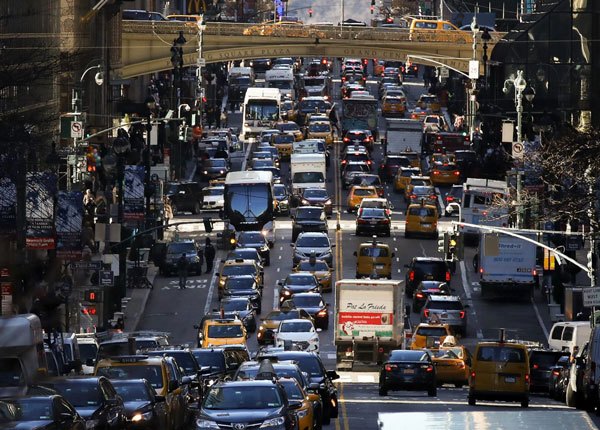
City Driving Strategies: Dealing With Gridlock & Traffic Jams For Faster Travel
Updated Dec. 11, 2020City traffic is at its worst during early morning and late afternoon rush hours. Maintaining a safe space around your vehicle is practically impossible during these high-congestion periods, as motorists may be lined-up bumper to bumper in every lane. In this situation, you can expect traffic to be moving extremely slowly and stopping often. Use cover braking to minimize your slowing and stopping time – but be careful not to ride the brake!
How to drive in heavy traffic
Certain driving behaviors can worsen congestion, hold up the flow of traffic and increase your chances of being involved in an accident. These practices should be avoided in all driving situations but can be especially problematic in heavy traffic. Do not:
- 1

Tailgate.
You may rear-end the driver ahead of you if they brake suddenly. Your view of the road ahead will also be reduced by tailgating. - 2

Rubberneck.
Slowing down to look at traffic accidents or anything else which catches your attention will hold up the flow of traffic. - 3

Unnecessary lane changes.
This disrupts traffic and increases the risk of a collision. - 4

Drive a malfunctioning or poorly-maintained vehicle,
or one which is running out of fuel.
Managing space in heavy traffic
Leaving the right amount of space in front of your vehicle is difficult in heavy traffic. Other drivers may attempt to merge into the lane ahead of you if there is too much of a gap. Equally, you must leave enough space that you can see ahead and react if the motorist in front of you brakes. With practice, you will eventually develop the judgment needed to effectively manage the space in front of your vehicle on congested city streets. In the meantime, exercise patience and try not to become frustrated with other drivers.
Dealing with gridlock
Gridlock is a situation that often occurs during extremely heavy traffic, where vehicles get stuck part-way through an intersection as there is not enough space to accommodate their vehicles on the other side. When further vehicles then enter the intersection from different lanes, an impasse is created where nobody can move, and everybody is competing to vacate the intersection first. This is incredibly dangerous, particularly for pedestrians, cyclists and motorcyclists.
Vigilance is the key to preventing gridlock. Always scan ahead before entering an intersection – even if the lights are green – and do not proceed unless there is enough space for your vehicle on the other side.
Do not block intersections
Drivers must always take additional care around intersections. As multiple lanes of traffic from different directions feed through intersections, a blockage could cause gridlock for several blocks back on every surrounding street. Keep an eye on the road ahead and the situation around your vehicle, avoiding any action which could disrupt traffic moving through an intersection or otherwise block it in any way.
This means you must rely on common sense in addition to obeying traffic signals. If a light indicates that you may enter the intersection but there is clearly no room for you to do so, hold back until the road ahead of you clears. Be prepared that drivers behind you who cannot see the obstruction may sound their horns to encourage you to move. Remain calm and do not retaliate if this happens.
Be aware of aggressive drivers
High-stress driving conditions are a breeding ground for aggressive drivers and the dangerous situations they create. Very few driving environments are more stressful than a city center during rush hour, factoring in the noise, hazards, bumper-to-bumper tailbacks and the threat of being late for work.
Frustrated motorists may sound their horns, gesture, yell or otherwise threaten other road users, taking their attention off the road and distracting nearby drivers. In more severe cases, drivers may intentionally tailgate, block other vehicles or force their way into a lane.
Try to remain calm if drivers around you exhibit any of these aggressive behaviors. Whatever happens, do not retaliate. Retaliation would create an even more dangerous situation by taking your attention away from the road and aggravating the other driver further.
Choose quieter routes
It may be possible to choose a less congested route to your destination. Listen out for traffic updates on the radio and check TV or internet reports before setting off on your journey. If an accident, adverse weather conditions, or some other event has brought traffic to a standstill, it is usually reported in the media.
You may benefit from using side-streets and one-way streets rather than sticking to major roads in heavy traffic. Though keep in mind that there are other dangers associated with less-traveled streets, such as poor signage, less vigilant drivers and uncontrolled intersections.
Whichever route you choose, always allow yourself plenty of time to reach your destination – particularly if traveling during rush hour. Often, taking public transport is a far more sensible option.




